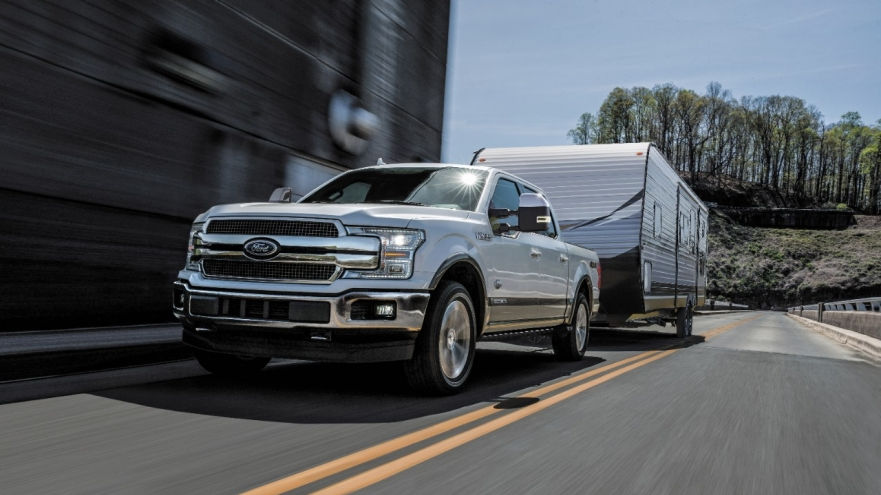Photo courtesy of Ford
Days before the Detroit auto show, where Chevy and RAM are expected to make a big splash with new truck models, Ford has dropped a bombshell — the first diesel F-150, and the first full-size truck to get 30 mpg.
The all-new F-150 Power Stroke diesel features an EPA-estimated 30 mpg highway rating, a best-in-class 11,400 pounds of towing capacity and 2,020 pounds of payload capacity, plus best-in-class 250 horsepower and 440 lb.-ft. of torque.
“For every truck owner who wants strong fuel economy while they tow and haul, we offer a new 3.0-liter Power Stroke V6 engine that dreams are made of,” said Dave Filipe, vice president global powertrain engineering. “The more you tow and the longer you haul, the more you’ll appreciate its class-leading towing and payload capacity and how efficient it is at the pump.”
The team behind the 6.7-liter Power Stroke for Super Duty trucks designed and engineered the new 3.0-liter Power Stroke V6 diesel engine to the needs of F-150 customers who tow and haul frequently. The block features the compacted-graphite iron construction and forged-steel crank used in the 2.7-liter EcoBoost engine for added strength and durability along with reduced weight. Peak torque comes at just 1,750 rpm with strong torque delivery continuing throughout the rpm range, which is ideal for towing or hauling heavy loads over long distances. For greater responsiveness and reduced turbo lag, the Ford truck team chose a high-efficiency variable-geometry turbocharger. A common-rail fuel injection system precisely optimizes performance and fuel efficiency, while a high-pressure 29,000 pounds per square inch injection calibration enables smoother, quieter operation with reduced emissions. Dual fuel filters are added for improved break-in, while a cast-aluminum oil pan and two-stage oil pump mean reduced parasitic loss and improved fuel efficiency.
F-150’s military-grade aluminum-alloy body introduced in 2015 lightens the load by 700 pounds, and for 2018, stronger axles coupled with the fully boxed, high-strength steel frame add further robustness.
Extreme driving conditions were important factors in the new design, which features a mechanical engine-driven fan and dual radiator shutters for improved high temperature, high-altitude performance – which Ford says is a key advantage versus the electric cooling fans used by competitors.
“We know that competing diesels with electric cooling fans have to dial back on power under extreme heat and altitude, so we decided on a viscous-controlled mechanical fan that has the capacity to move much more air across the radiator and intercooler in extreme conditions,” said David Ives, Ford diesel engine technical specialist. “This gives F-150 Power Stroke owners more power and more passing capability in harsh conditions.”
In more moderate driving and towing conditions, the F-150 engine control system backs off the fan load through a viscous coupler, closing down the two radiator shutters for improved aerodynamic efficiency and reduced parasitic engine loss.
The standard SelectShift 10-speed automatic transmission maximizes shift points and gear ratios to optimize power, low-rpm torque and efficiency. This segment-exclusive transmission can non-sequentially select the right gear ratio based on need. To help reduce fuel consumption and vehicle emissions during city driving, Auto Start-Stop also comes standard.
The new engine is available for both 4×2 and 4×4 F-150 pickups. Customers can choose this engine option for 2018 F-150 Lariat, King Ranch and Platinum edition SuperCrew trucks with either a 5.5-foot or 6.5-foot bed configuration, and SuperCab trucks with a 6.5-foot bed configuration.
The diesel upgrade will add between $2500 and $4000 to the sticker price. With the increased fuel mileage, it will take about 25,000 miles driving to recover that cost, but Ford says the benefit increases 5-fold when towing, excellent news for RV owners, who could see the increased price pay for itself after just 5000 miles with the camper hooked up. In mid-January Ford dealers begin taking orders. Deliveries begin this spring.








